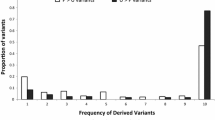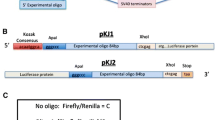Abstract.
Codon usage bias of 1,117 Drosophila melanogaster genes, as well as fewer D. pseudoobscura and D. virilis genes, was examined from the perspective of relative abundance of isoaccepting tRNAs and their changes during development. We found that each amino acid contributes about equally and highly significantly to overall codon usage bias, with the exception of Asp which had very low contribution to overall bias. Asp was also the only amino acid that did not show a clear preference for one of its synonymous codons. Synonymous codon usage in Drosophila was consistent with ``optimal'' codons deduced from the isoaccepting tRNA availability. Interestingly, amino acids whose major isoaccepting tRNAs change during development did not show as strong bias as those with developmentally unchanged tRNA pools. Asp is the only amino acid for which the major isoaccepting tRNAs change between larval and adult stages. We conclude that synonymous codon usage in Drosophila is well explained by tRNA availability and is probably influenced by developmental changes in relative abundance.
Similar content being viewed by others
Author information
Authors and Affiliations
Additional information
Received: 5 December 1996 / Accepted: 14 June 1997
Rights and permissions
About this article
Cite this article
Moriyama, E., Powell, J. Codon Usage Bias and tRNA Abundance in Drosophila . J Mol Evol 45, 514–523 (1997). https://doi.org/10.1007/PL00006256
Issue Date:
DOI: https://doi.org/10.1007/PL00006256




